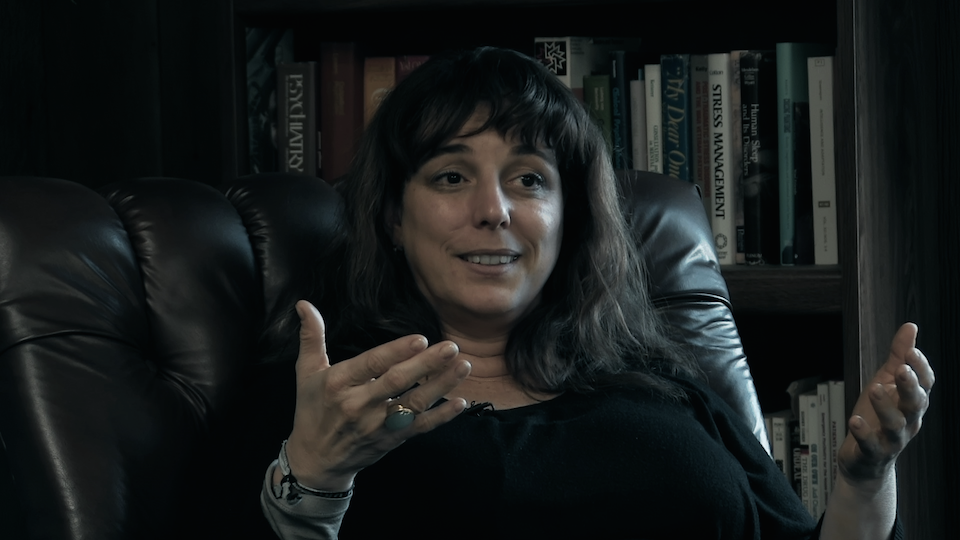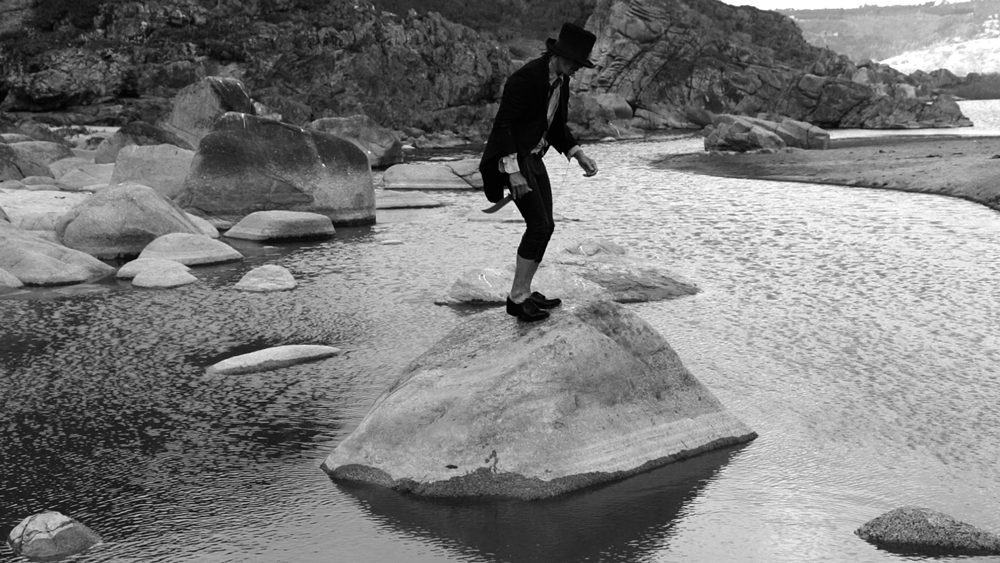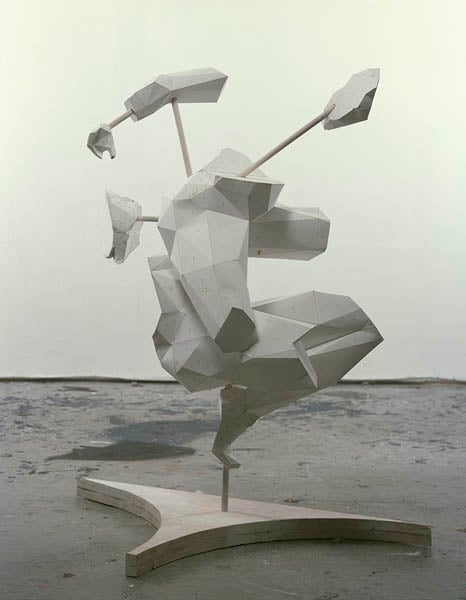
© » KADIST
Simon Starling
Invited in 2007 to the Museum Folkwang in Essen (Germany), Simon Starling questioned its history: known for its collections and particularly for its early engagement in favor of modern art (including the acquisition and exhibition of works by Cézanne, Gauguin, Van Gogh, Matisse), then destroyed during the Second World War, the museum was pillaged for its masterpieces of ‘degenerate art’ by the nazis. Starling found photographs of a hang dating back to 1929, taken by Albert Renger-Patzsch, the German New Objectivity photographer. Firstly, he researched the artworks that were presented then which for the most part had been restituted or acquired by private collectors after the war.

© » KADIST
Christoph Keller
Message to the Extraterrestrials consists of a slide projector beaming images into the side of the telescope. These are then reflected down to a mirror at the bottom of the telescope and from there to a mirror on the ceiling. From the ceiling the images bounce down to a mirror at floor level which projects the images through an open window to the world outside.

© » KADIST
Sung Hwan Kim
An early work in Sung Hwang Kim’s career, the video Summer Days in Keijo—written in 1937 is a fictional documentary, the film is based on a non-fiction travelogue, In Korean Wilds and Villages , written by Swedish zoologist Sten Bergman, who lived in Korea from 1935 to 1937. In Kim’s film, a Dutch female protagonist traces Bergman’s path in the present-day Seoul (Keijo was the Japanese name for Gyeongseong, currently Seoul). The protagonist navigates through spaces that have been rebuilt since the 1950s onwards, and the scenes are narrated by a voice-over based on Bergman’s written description of the modern city in 1937.

© » KADIST
Pratchaya Phinthong
In order to make If I dig a very deep hole (2007) the artist looked for the extreme geographical opposite of Paris when drawing a straight line throughout the globe. Then, he went to this place, the Chatham Islands in New Zealand, to photograph the full moon before coming back to Paris to take a picture of that same moon. This work brings together two diametrically opposite places, two singular experiences, two different moments and the same full moon.

© » KADIST
Yael Bartana
Yael Bartana received great international attention for the trilogy series And Europe Will be Stunned (2007 – 2011). The series, which includes the films Mary Koszmary (Nightmare) (2007) , Mur i wieza (Wall and Tower) (2009), and Zamach (Assassination) (2011), centers on a young Polish politician’s call for the return of 3.3 million Jewish people who emigrated to Palestine. The films employ the same techniques of Leni Riefenstahl’s Nazi propaganda films, combining fact and fiction with the past and the present.

© » KADIST
Jianwei Wang
In Dilemma: Three Way Fork in the Road , Wang references Peking opera in a re-interpretation of traditional text. The performance begins with two broad-knife-wielding characters circling each other in conventional operatic steps. Oblivious to the presence of these two on stage, additional characters, in a mix of period costume and contemporary dress, enter the stage in increasing droves to consume a various of foods laid out on a table until they collapse and pile on top of each other.

© » KADIST
Luisa Lambri
Rudolph Schindler’s designs, part of a practice he called “Space Architecture,” marry interior with exterior and space with light. The architect’s longtime studio and residence, which he built in Los Angeles in 1922, exemplifies this philosophy, and has since become an influential part of the modernist architectural canon. In Untitled (Schindler House #01) (2007), Luisa Lambri describes Schindler’s studio by capturing its aftereffects—the play of light and shadow cast through branches onto a surface.
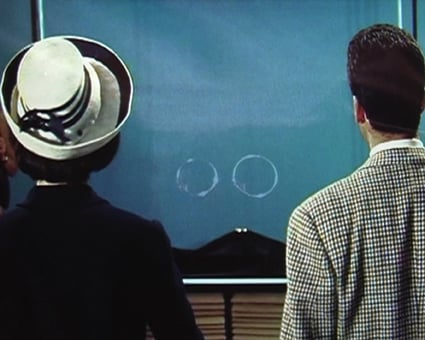
© » KADIST
Haris Epaminonda
Created from extracts of kitsch movies or Greek soap operas from the 1960s, these videos are like audiovisual ‘postcards’ reflecting a nostalgic and melancholic approach. The images have lost their context and original meaning to then be re-assembled, confronted to each other and superimposed with other elements, to reveal new sequences. The narration has disappeared from the sequences and the spectator waits in vain for something to happen.

© » KADIST
Edgardo Aragón
Efectos de familia (Family Effects, 2007–9) is a series of 13 videos that dramatize an array of abusive events derived from Edgardo Aragón’s family’s history—specifically its involvement with organized crime. Each episode is an action performed by some combination of his two young cousins, nephew, and younger brother. In one, a boy is shot to death inside a pickup truck.

© » KADIST
Colter Jacobsen
Victory at Sea is a simple mechanism made from cardboard and found materials that mimics the Phenakistoscope, an early cinematic apparatus. The piece requires the viewer to turn a wheel and look through a small hole in order to see a briefly animated succession of small drawings of sailors.
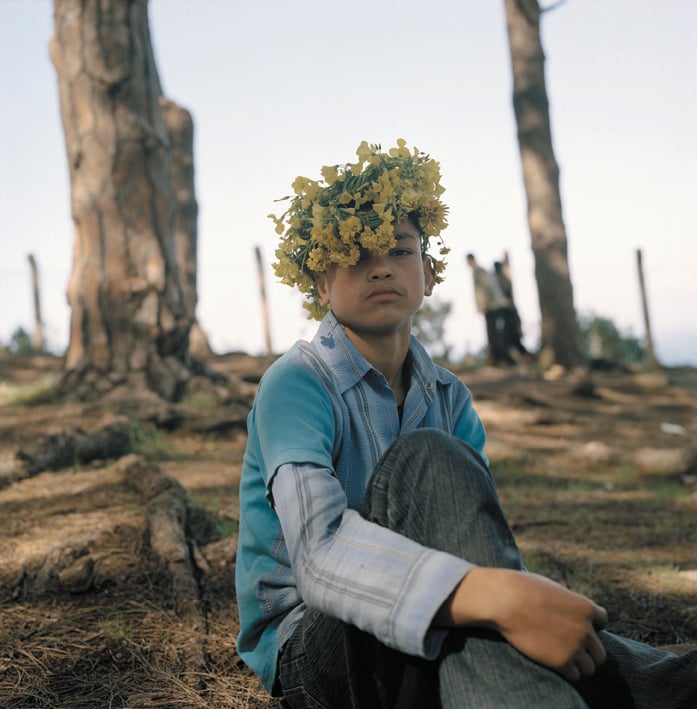
© » KADIST
Yto Barrada
This photograph is part of the series titled “Iris Tingitana project” (2007) focusing on the disappearance of the iris. If Yto Barrada was initially interested in the architectural heritage of the city, today the core of her research focuses on risks around landscape and its heritage. The iris, found bordering the city, carries the name of the city, and is an emblem of Tangier.
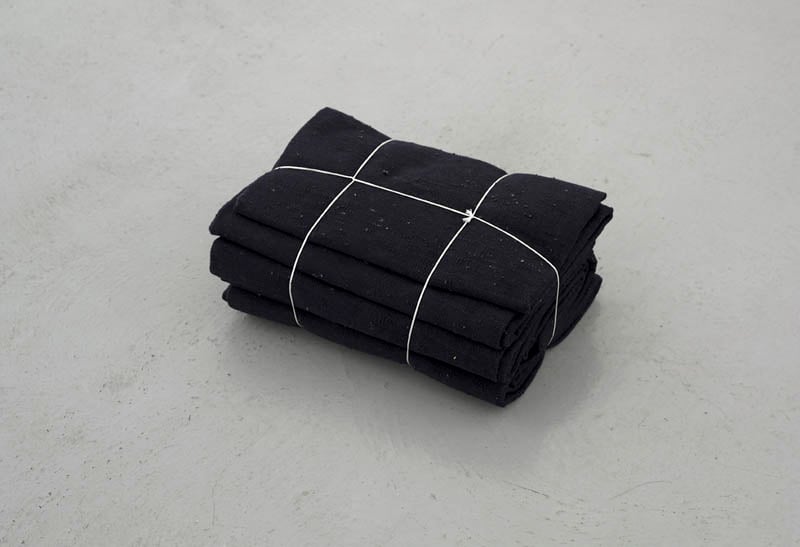
© » KADIST
Jason Dodge
In Algeria, Djidjiga Meffre has woven a fabric with a string, a length equal to the distance from the earth to troposphere. Several works by Dodge, with the same title, follow this principle of measurement. The work, like a synecdoche, is synthesized by its material and its implementation, both of which are fully part of the meaning.
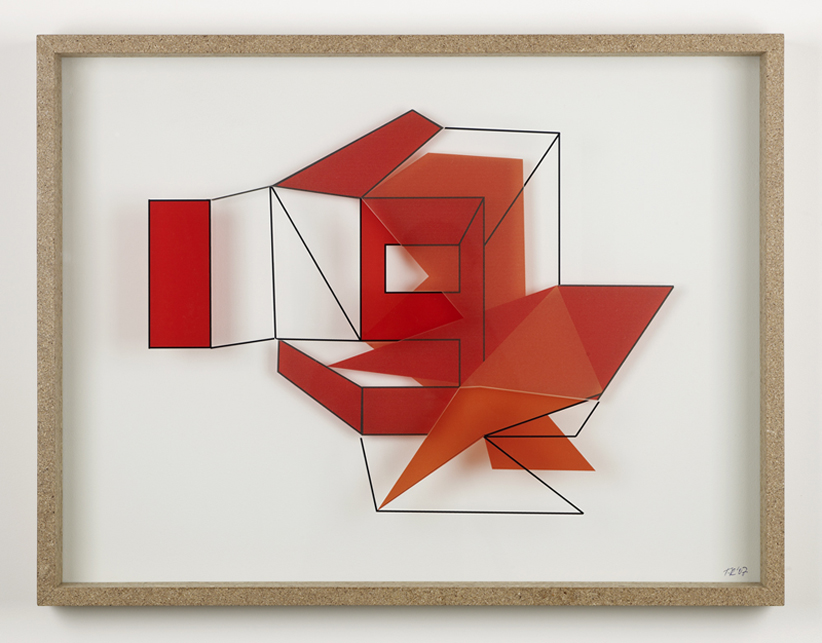
© » KADIST
Tobias Rehberger
Drawing & Print (Drawing & Print)
9’oclock (my time is not your time) pertains to a series consisting of three numbers: 5, 10 and 11 works were made for the exhibition “Signs and messages from modern life” at the Kate McGarry Gallery in 2007. The notion of time is a recurring theme in Tobias Rehberger’s work. We can recall the exhibition ‘Night Shift’ at the Palais de Tokyo ( Paris) in 2002 where the works could be seen only from the angle of the sun, exploring the relationship between day, night, and other natural cycles like the sun and moon, life and death.

© » KADIST
Trisha Donnelly
Untitled is a black-and-white photograph of a wave just before it breaks as seen from the distance of an overlook. Donnelly’s interest in the waveform–visually, aurally, and perceptually–is made manifest in works across multiple media, including photography, drawing, video, sculpture, and performance.

© » KADIST
Pascual Sisto
In the video No Not Nothing Never , a group of 23 domestic fans arranged in a mountainous desert landscape, move in perfect synchrony. Although when placed in this arid geography, the fans become evocative of wind turbines that generate electricity, the fans used by Pascual Sisto consume energy in a futile attempt to alleviate the dry heat. The familiar humming of the fans is eclipsed by the sounds of the strong desert winds that pass by as the fans turn.

© » KADIST
Ulla von Brandenburg
Eight opens with a close up of a painting by Hubert Robert of the Chateau de Chamarande where the film was shot. This work acts as a key to the unfolding film. In Eight , the camera tracks back and forth, proceeding from room to room, closing in on each motif, lingering and then passing on without ‘comment’, as a surrogate for the spectator’s gaze.

© » KADIST
Haris Epaminonda
Haris Epaminonda’s work questions the manipulation and the flow of images as well as their power of fascination. The images she works with to create her collages (paper or video) come from magazines or history books, film extracts or soap operas from the 1960s and 1970s. By readapting a universal past (in her work on monuments) as well as personal (with tv series she used to watch as a child, etc.)

© » KADIST
Joe Biel
Drawing & Print (Drawing & Print)
Head in Hands by Joe Biel is part of a larger series of drawings made in connection with the book of short stories Navigating Ghosts by Annie Buckley. Biel’s small-scale black and white drawing features a torso holding their own head in their hands, though the expression on the bodiless face maintains a serene sensibility. The edges of the drawing around the figure’s neck and torso are softened so that the figure appears ghostly, as if the character is an illusion or dream.

© » KADIST
Roni Mocan
Roni Mocan’s work Welcome is a floorwork comprised of a grid-like arrangement of doormats that the artist borrowed from the local community, people in his building, and even from participating artists from the exhibition where it was first presented. In a time where xenophobia, divisive border rhetorics and news of an ongoing global refugee crisis have become commonplace, instead of sitting barely noticed at a home’s entrance, Mocan transforms these ubiquitous objects into carriers of a poignant and necessary greeting message. The installation underscores issues of migration, borders and racism, and gives light to the urgent need and responsibility we have towards addressing the issues that prevent humans from being welcome everywhere.
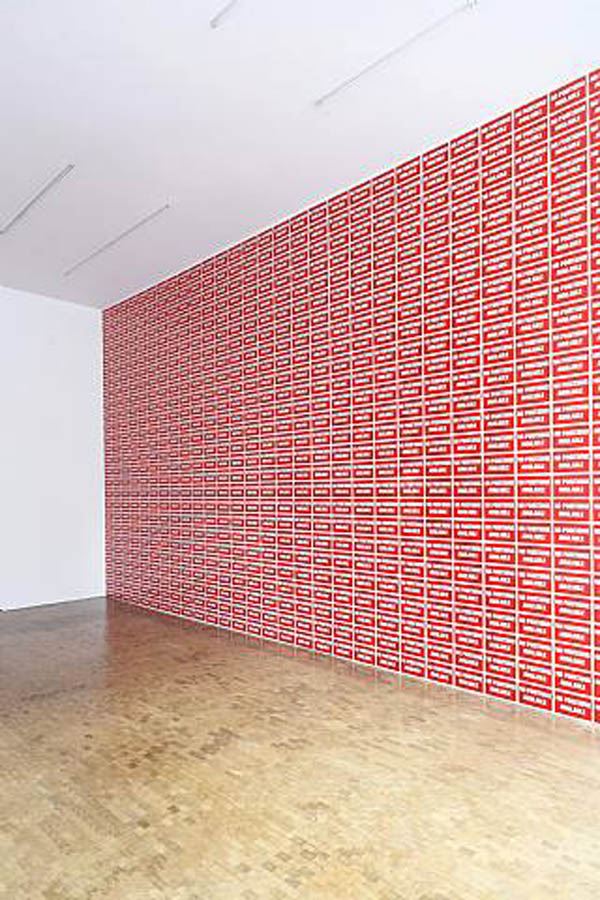
© » KADIST
Ceal Floyer
NO POSITIONS AVAILABLE is composed of panels covering the entire wall of the gallery exemplifying one of the tendencies of the artist. The “billboard sign,” like a ready-made, plays with the different meanings of the title, literally and abstractly. The repetition of the sign, as it has used in Minimal and Conceptual art, fills the space.

© » KADIST
Stéphane Calais
Drawing & Print (Drawing & Print)
L’herbier (petit Trianon) consists of four “realistic” drawings of plants, screenprinted on transparent PVC. Relying on drawing as a study, this work resembles many sketchbook drawings of the artist, but also alludes to the series titled “Magnolia”. “The subject is a kind of cultural minimum (the plant) and the herbarium tends to this minimum,” Calais suggests.

© » KADIST
Omer Fast
This work is based on a temporal loop in which the stories of several duets coexist and interfere with each other. The narrative articulates itself around four key moments or four neighboring apartments that the viewer discovers progressively: an air stewardess having an argument with her unemployed husband, and old lady telling old stories that no longer interest her caregiver, a black woman who is accused of stealing jewelry just when a newcomer, of Arab origin, moves into the apartment block. The narration itself is based on a void or non-event, however its dialogues refer to subjects such as terrorism or iimmigration.

© » KADIST
Michael Landy
H.2. N. Y Skeleton of the Dump revolves entirely around the performance “Homage to New York” (1960), of the Swiss artist Jean Tinguely (1925-1991), during which the machine built by the artist in the gardens of the Museum of Modern Art (MOMA) had to self-destruct itself in 27 minutes, but, in the end, it had to be finished off by firemenbeing called in after it erupted in flames. Since the discovery of Jean tinguely’s retrospective at the Tate Gallery in London, in 1982, Michael Landy spent two years researching and sketching (charcoal, oil, glue, ink) from his previous research carried out at Museum Tinguely in Basel, and at the MOMA in New York.

© » KADIST
Joachim Koester
Tarantism is the name of disease which appeared in southern Italy, resulting from the bite of a spider called Tarantula. This bite caused various symptoms, such as nausea, difficulty to speak, delusion, excitability and agitation. The victims suffered then from convulsions and the only way to heal them was to engage in a frenzied dance, as it was believed.

© » KADIST
Carlos Amorales
This work, a large oil painting on canvas, shows a moment from Amorales’s eight-minute two-channel video projection Useless Wonder (2006). The video is based on Edgar Allen Poe’s 1838 novel The Narrative of Arthur Gordon Pym of Nantucket. The painting, derived from an image from a different, preexisting work, represents the artist’s continued interest in realizing particular subject matter in alternative forms, thereby imbuing it with new meanings and interpretations.

© » KADIST
John Baldessari
Arms & Legs (Specif. Elbows & Knees), etc. : Arm (with Bottle) belongs to Baldessari’s most recent series of paintings in which the artist brings together photographic, painted, and three-dimensional elements, to juxtapose unlikely body fragments such as noses and ears, elbows and knees, or eyebrows and foreheads.

© » KADIST
Alejandro Marré
Typical Weapons is a series of sculptural interventions where Alejandro Marre transforms traditional Guatemalan craft objects usually sold as souvenirs into weapons. Wooden flutes, hacky sacks, and musical instruments are woven with rope to appear as nunchucks, slingshots, and other forms of armament. Designed to be exhibited as objects from an archaeological museum, the previously innocuous representations of Guatemalan popular culture acquire darker meanings as they come to symbolize the brutality and extreme violence that now mark the country.

© » KADIST
Rivane Neuenschwander
Mapa-Mundi BR (postal) is a set of wooden shelves holding postcards that depict locations in Brazil named for foreign countries and cities. When installed, viewers are invited to fill out and mail a postcard to any destination, an act which parallels the dissemination and global circulation of image, text, and the idea of place.

© » KADIST
Piero Golia
Golia’s Untitled 3 is an installation in which a mechanical device is programmed to shoot clay pigeons that are thrown up in front of a white wall. More than a simple reference to the sport, the work has the disconcerting effect of creating a danger zone in the gallery space. The reference to direct aggression or violence is reinforced by the piece’s rapid pace.
Luisa Lambri
- location: Los Angeles, California
- year born: 1969
- gender: female
- nationality: Italian
- home town: Como, Italy
Sung Hwan Kim
In his practice, Sung Hwan Kim assumes the role of director, editor, performer, composer, narrator, and poet...
Haris Epaminonda
Epaminonda’s video works are based on re-shot excerpts of film and television footage – principally the Greek soap operas and kitsch romantic films fromthe 1960s that used to fill up Sunday afternoons in the artist’s Cypriot childhood –which she then subtly reworks...
Joe Biel
Working primarily in drawing, Joe Biel is interested in charged human situations...
Claudia Joskowicz
Claudia Joskowicz is a video and installation artist working at the intersection of landscape, history, and memory...
Lynn Hershman Leeson
- location: San Francisco, California
- year born: 1941
- gender: female
- nationality: American
- home town: Cleveland, Ohio
Roni Mocan
Roni Mocan ‘s works are inspired by common events of daily life...
Marepe
- year born: 1970
- gender: Male
- nationality: Brazilian
- home town: Santo Antônio de Jesus, Brasil
Yael Bartana
- location: ‘Afula, Yisra'el
- year born: 1970
- gender: female
- nationality: Israeli
Trisha Donnelly
- location: New York, New York
- year born: 1974
- gender: male
- nationality: American
- home town: San Francisco, California
Ulla von Brandenburg
- location: Karlsruhe, Deutschland
- year born: 1974
- gender: female
- nationality: German
Danh Vo
- location: Berlin, Germany
- year born: 1975
- gender: male
- nationality: Vietnamese and Danish
- home town: Ba Ria, Vietnam
Joachim Koester
- year born: 1962
- gender: male
- nationality: Danish
- home town: Copenhagen, Denmark
John Baldessari
- location: Los Angeles, California
- year born: 1931
- gender: male
- nationality: American
- home town: National City, California
Katinka Bock
The city, the landscape and the exhibition space are Katinka Bock’s favored playgrounds...
Ben Shaffer
- year born: 1924
- gender: female
- nationality: Canadian
- home town: Louiseville, Canada
Zbigniew Rogalski
With the exemplification of visual illusions, such as reflection and obliteration, Rogalski is questioning reality and its mode of représentation...
Tobias Rehberger
A student of Martin Kippenberger, Tobias Rehberger emerged in the 1990s as one of the major artists of the younger generation in Germany and one of the most active on the international stage...
Kadar Brock
Kadar Brock makes large-scale abstract paintings via a rigorous process of layering, erasing, and reworking his surfaces; his highly textured canvases are variously discordant, exuberant, and topographical in nature...
Carlos Amorales
- year born: 1970
- gender: male
- nationality: Mexican
- home town: Mexico City, Mexico
Raymond Pettibon
- location: Hermosa Beach, California
- year born: 1957
- gender: male
- nationality: American
- home town: Tucson, Arizona
Jianwei Wang
- location: Beijing, China
- year born: 1958
- gender: male
- nationality: Chinese
- home town: Sichuan Province, China
Yoan Capote
- location: Havana, Cuba
- year born: 1977
- gender: male
- nationality: Cuban
Simon Starling
- location: Copenhagen, Denmark
- year born: 1967
- gender: male
- nationality: British
- home town: Epsom, United Kingdom
Toby Ziegler
- location: London, United Kingdom
- year born: 1972
- gender: male
- nationality: British
Chen Shaoxiong
- location: Beijing
- location: Guangzhou, China
- year born: 1962
- gender: male
- nationality: Chinese
- home town: Shantou, Guangdong Province, China
Omer Fast
- location: Yerushalayim, Yisra'el
- year born: 1972
- gender: male
- nationality: Israeli
Pratchaya Phinthong
Pratchaya Phintong’s works often arise from the confrontation between different social, economic, or geographical systems...
Cao Fei
- location: Beijing, China
- year born: 1978
- gender: female
- nationality: Chinese
- home town: Guangzhou, China
Jason Dodge
Jason Dodge extracts objects from everyday life – of which he adds minimal alterations by the way that he isolates and presents them...




